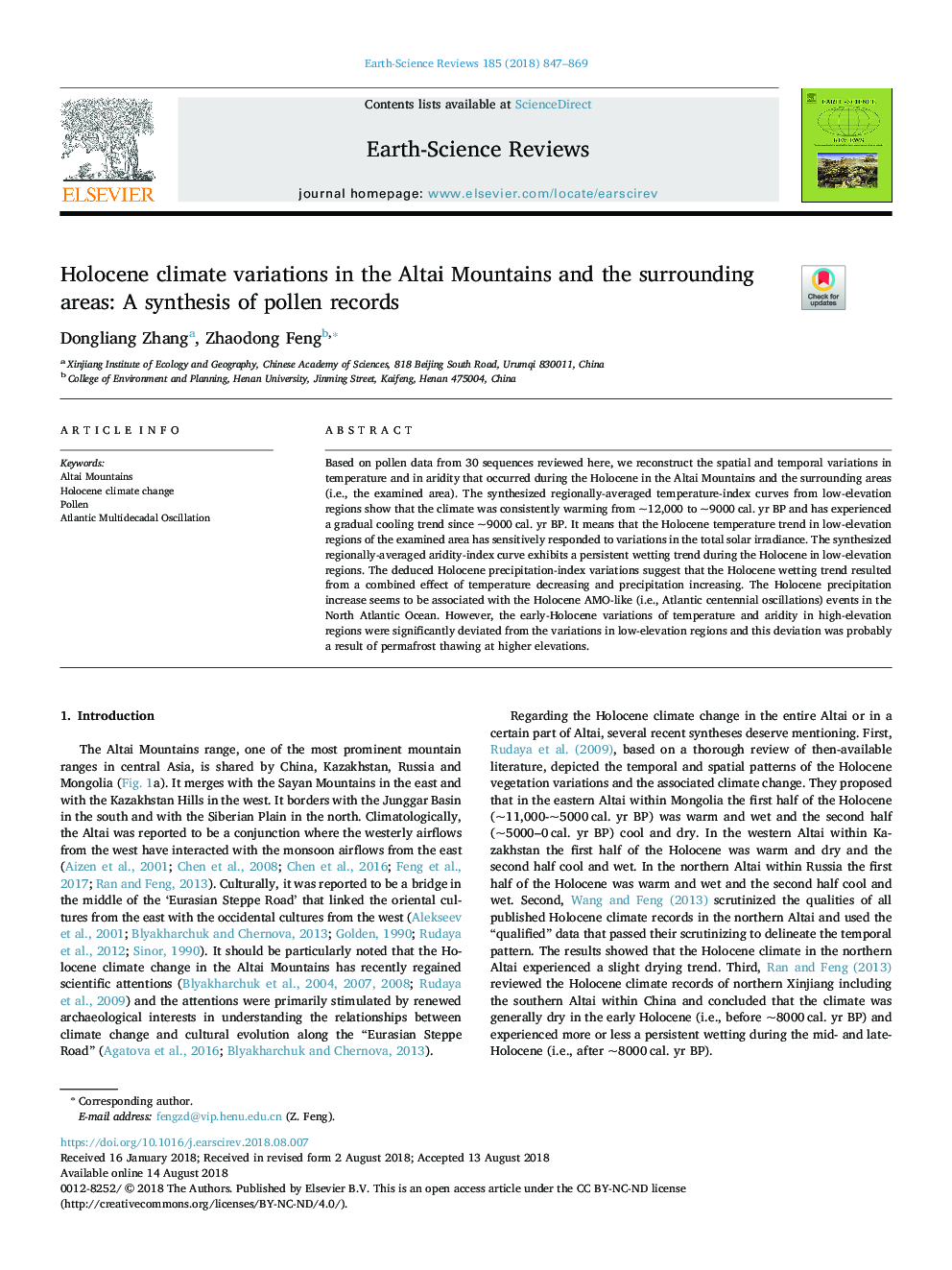| Article ID | Journal | Published Year | Pages | File Type |
|---|---|---|---|---|
| 8912913 | Earth-Science Reviews | 2018 | 23 Pages |
Abstract
Based on pollen data from 30 sequences reviewed here, we reconstruct the spatial and temporal variations in temperature and in aridity that occurred during the Holocene in the Altai Mountains and the surrounding areas (i.e., the examined area). The synthesized regionally-averaged temperature-index curves from low-elevation regions show that the climate was consistently warming from ~12,000 to ~9000â¯cal. yr BP and has experienced a gradual cooling trend since ~9000â¯cal. yr BP. It means that the Holocene temperature trend in low-elevation regions of the examined area has sensitively responded to variations in the total solar irradiance. The synthesized regionally-averaged aridity-index curve exhibits a persistent wetting trend during the Holocene in low-elevation regions. The deduced Holocene precipitation-index variations suggest that the Holocene wetting trend resulted from a combined effect of temperature decreasing and precipitation increasing. The Holocene precipitation increase seems to be associated with the Holocene AMO-like (i.e., Atlantic centennial oscillations) events in the North Atlantic Ocean. However, the early-Holocene variations of temperature and aridity in high-elevation regions were significantly deviated from the variations in low-elevation regions and this deviation was probably a result of permafrost thawing at higher elevations.
Related Topics
Physical Sciences and Engineering
Earth and Planetary Sciences
Geology
Authors
Dongliang Zhang, Zhaodong Feng,
